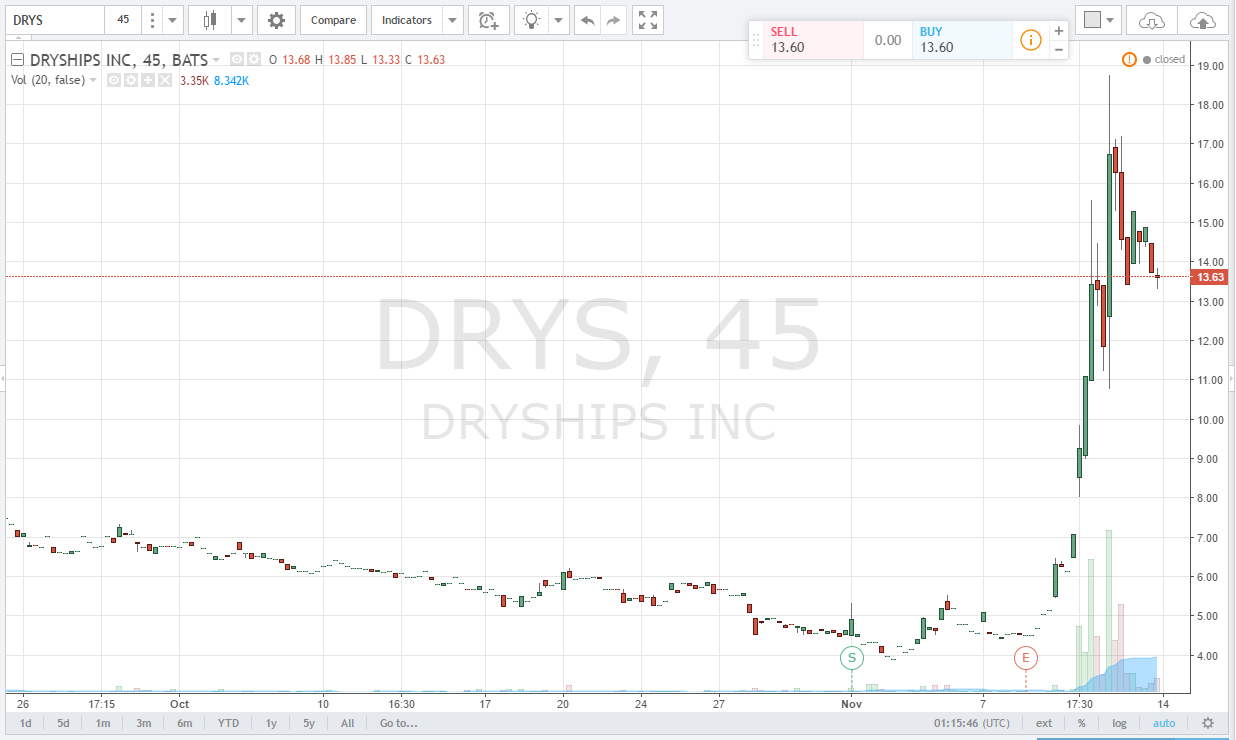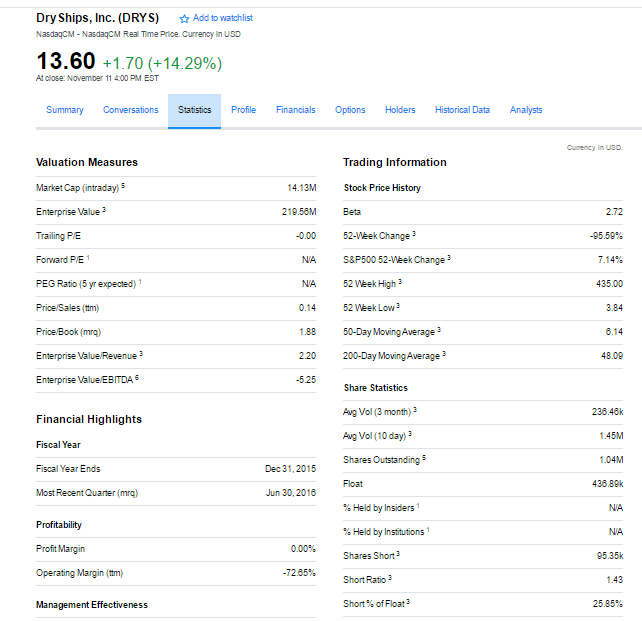How To Profit From The Sympathy Play When Trading Blue Chip Stocks
On November 9th, 2016, it was announced that Donald Trump would be the 45th President of the United States In America. When the markets opened that day we started to see money flow from certain sectors into others. Intuitively, this makes sense, a new regime and potentially new policies will be enforced. Some industries will thrive, while others might suffer with blue chip stocks.
One sector that was resurrected, where the shippers of dry bulk cargo. For example, DryShips, Inc. finished that week up more than 195%.

(source: TradingView.com)
The stock price spiked from about $5 to as high as about $19 a share in a couple days. According to YAHOO! Finance, more than 25% of the shares were short, creating a short squeeze in the blue chip stock.

(source: YAHOO Finance!)
We had a catalyst, coupled with some fundamental facts about the stock. Specifically, there was a small float, about a million shares outstanding, and a high short interest, that helped drive the stock price higher.
Generally, when you have such a dramatic move in a stock, traders will look for comparable companies to piggyback off of.
In this example, Eagle Bulk Shipping Inc. (EGLE) shared some similar characteristics. It was trading under $10 per share, and in the same sector. With that said, some traders may feel they missed the move in DryShips, and look to pile into the next best thing. That week, Eagle Bulking Shipping closed more than 42% higher.
This strategy of piling into similar companies to ride the momentum of the hot blue chip stocks is called the sympathy play.
How can you use the sympathy play to profit?
Well, the first example is based on one stock really generating a lot of momentum and just finding something in the same space. But it doesn’t have to always be off an extreme move.
For example, let’s say Company A had earnings, but Company B has yet to report. One could wait for the EPS of Company A, and trade Company B off their results. If the EPS is positive, you take Company B for a long, if it’s negative, you take Company B for a short.
Another example, let’s say a very well known hedge fund is doing very poorly this year, and there are rumors that he might be facing redemptions or closing down the fund soon. Traders might start attacking his positions, even if there isn’t any news in those blue chip stocks.
On the other hand, let’s say a well known hedge fund manager is on a hot streak, traders might start buying stocks that they have on, hoping that they would appreciate in value.
Generally, you should be careful when relationships are loose, but volatility does create opportunities in the market.
The key is to be aware of companies, the sectors they are in, who their competitors are and see if you can take advantage of the sympathy play. As you’ve seen, there are a number of different ways that this strategy can be employed. These were just a couple of examples for you to get acclimated with the strategy regarding blue chip stocks.
